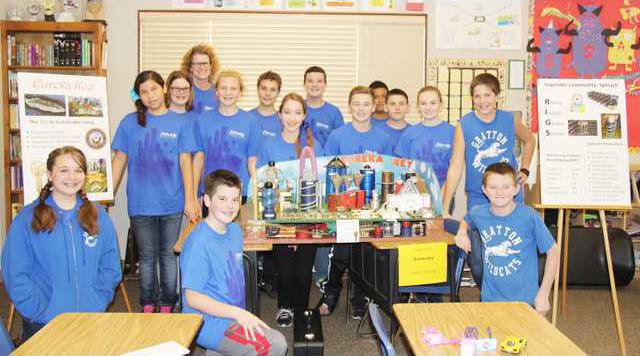Some may call it beginner’s luck—but luck had nothing to do with Gratton School’s dominating success at the Northern California Regional State Finals Future City Competition on Saturday.
Rather, students in Rexanne Jensen’s seventh grade class rightfully earned their first place award by spending five months working on Eureka Key, a project which they would ultimately decide to enter into the engineering competition for the first time.
“It just means so much to us,” said student presenter Stephanie Temnyk. “Our whole team put so much effort into this and it’s just really amazing that this is our first time competing.”
“I think for our team, it helps us believe that we can achieve anything that we put our minds to,” added student presenter Kendall La Rosa.
Devised for students in the 6th, 7th, and 8th grades, Future City is a national competition where teams imagine, design, and build cities of the future under the guidance of teachers and engineer mentors.
Throughout the competition, students use SimCity software, research and write solutions to engineering problems, build tabletop scale models using recycled materials, and present their ideas to a panel of judges.
“It was really fun finding these old and dirty pieces of recyclable materials and then turning them into a beautiful city,” said Temnyk.
Pulling inspiration from the book, “Island of the Blue Dolphins,” the Gratton seventh graders worked diligently to complete their project and future city model located on San Nicolas Island in the year 2065.
Populated by 100,000 people, this hypothetical city includes a number of innovative components, including energy storage facilities, hover cars, and a 900-foot tsunami wall.
Additionally, the team answered this year’s theme of “Feeding Future Cities” with vegetable commodity of spinach and protein commodity of chicken. Both products had operating facilities on the island, which were aimed to flourish within city limits, as well as feed their citizens.
“As a teacher, the biggest challenge was actually getting them to do the research, they wanted to look at lots of pictures, but not so much the research,” laughed Jensen.
Gratton School’s Future City not only secured first place at the competition, but also a number of special awards, including People’s Choice Award, Best Model Award, and Most Innovative Design of Infrastructure Systems Award.
“We didn’t expect to make it this far because we didn’t know what the competition is like,” said student presenter Matthew Reis. “So we were all a little nervous.”
With the regional title under their belts, Gratton School students will move on to represent Northern California at the national competition in February in Washington, D.C. This is the fifth consecutive year that a team from Stanislaus County will represent Northern California at the national competition.





